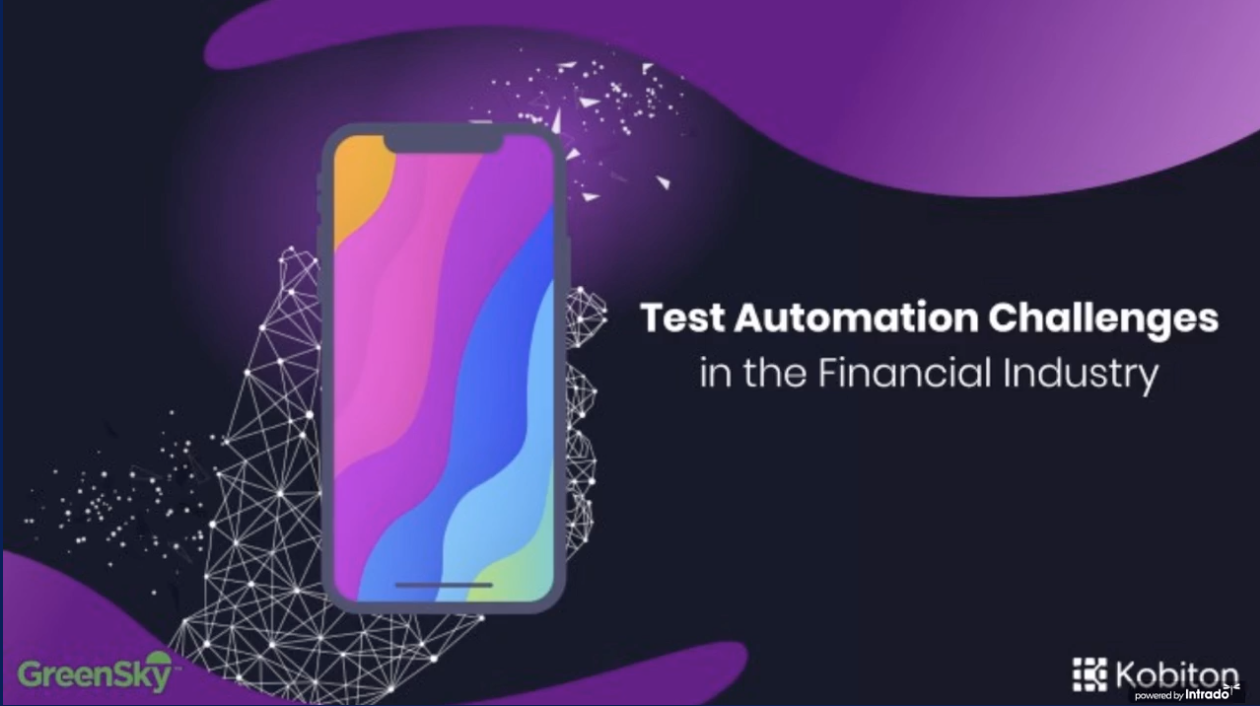
Test Automation Challenges in the Financial Industry

Adam Creamer
Software products, websites, and apps have one primary purpose: to serve people. So, it’s safe to say that only people can tell if these products are good enough and offer the kind of improvements they need.
So before the app or software makes its way to the general public, it should be tested thoroughly by a QA professional or test engineer.
In a world where automation rules, it’d be common to assume that manual testing is an archaic method of quality control. But that is entirely untrue.
The fact of the matter is that manual testing catches bugs, design flaws, or usability issues that may affect user experience. This is important because approximately 20% of users abandon an app after the first session, which means that one in five users would never reinstall or open your application. Manual testing can help reduce that rate considerably. However, this is not to say that there are no challenges faced in manual testing projects.
Let’s learn more about manual testing and why developers should prioritize it.
Manual testing is a software testing technique used by QAs to test apps and software to identify bugs and defects manually. They follow a pre-made test plan to analyze the performance of the product from the user’s perspective.
All in all, manual testing is about validating the actual behavior of software against expected performance, and any difference is reported as a bug.
However, the process can be long-winded and time-consuming. So let’s explore these and other inherent challenges of manual testing.
Like any testing technique, manual testing has drawbacks. But, first, it is essential to know them clearly to overcome all of them effectively.
For manual testing, provide a detailed document of every testing requirement and provide it to the tester. After this stage, the tester’s responsibility is to comprehend every requisite properly. If they are uncertain at any step, make sure details are clarified before starting any manual testing.
This is vital as the tester makes the test cases according to those specified requirements. So, if they don’t understand or misinterpret a condition, the whole purpose of the software testing will fail.
As no software can ever be perfect, the testing process is always ongoing. But it is vital to cover as much area as possible during software testing. So, the tester needs to find all software defects to create relevant test cases.
However, the tester has to scale the software without any automated technology in manual testing. Since the software complexity increases with its growth, it is difficult to find every defect. As a result, some bugs and issues may slide, which later affect application performance.
Regression testing is conducted on existing software to ensure that the new changes in the application are not affecting other code and lowering the functionality. However, when software expands after every up-gradation, it becomes enormous to apply manual testing. This makes it impossible to verify new changes, test the previous code’s functionality, and track any new defects that might have arisen due to new coding.
Companies need to maintain the application launch deadline. However, if the application is not tested on time, it pushes the launch date back. This is not good for the brand image as customers wait to see the new specifications.
It is challenging to maintain deadlines because the tester has to check and create test cases for every problem manually. This takes time which can be a major challenge in manual testing when everyone’s on a tight schedule.
Meanwhile, identifying bugs and errors is not the only goal of software testing. The process includes execution, defects logging, regression testing, and exploratory testing. It is hard to maintain deadlines when all these functions have to be manually done in a small time frame.
Kobiton is a mobile software testing platform that offers manual and automated testing on real devices. It is known for accelerating the delivery and testing of mobile apps in the cloud or on-premise. You can choose their manual or automated service as both bring exceptional results.
It is very effective at testing iOS and Android device applications in a high customer-responsive environment. Moreover, Kobiton uses multiple features to ensure manual testing’s quality while delivering a testing report and fixing glitches on time. Furthermore, it manually tests your device on real physical devices in the cloud with full support. You can also use it to test your device by yourself manually. It has multiple analysis options such as:
Root Cause Analysis: With root cause analysis, Kobiton captures detailed logs of every feature, including complete videos, screenshots, system metrics, and battery performance.
Real Device Testing: Kobiton lets testers access every device within their IDE, making it easy to test cloud or local software directly from the developer workstation.
Easy and Fast To Use: Kobiton gives you remote access, making it easier to conduct manual testing. So, you test websites, native apps, and hybrid apps without any hassle. Moreover, your test results are automatically stored for later evaluation. Finally, it is fast and reliable because it pinpoints where the issue is occurring, making it easy to resolve.
Manual testing helps you assess mobile applications to provide your customers with a positive app experience. However, specific challenges of manual testing can make it a difficult task. But you can surpass them with the help of Kobiton.